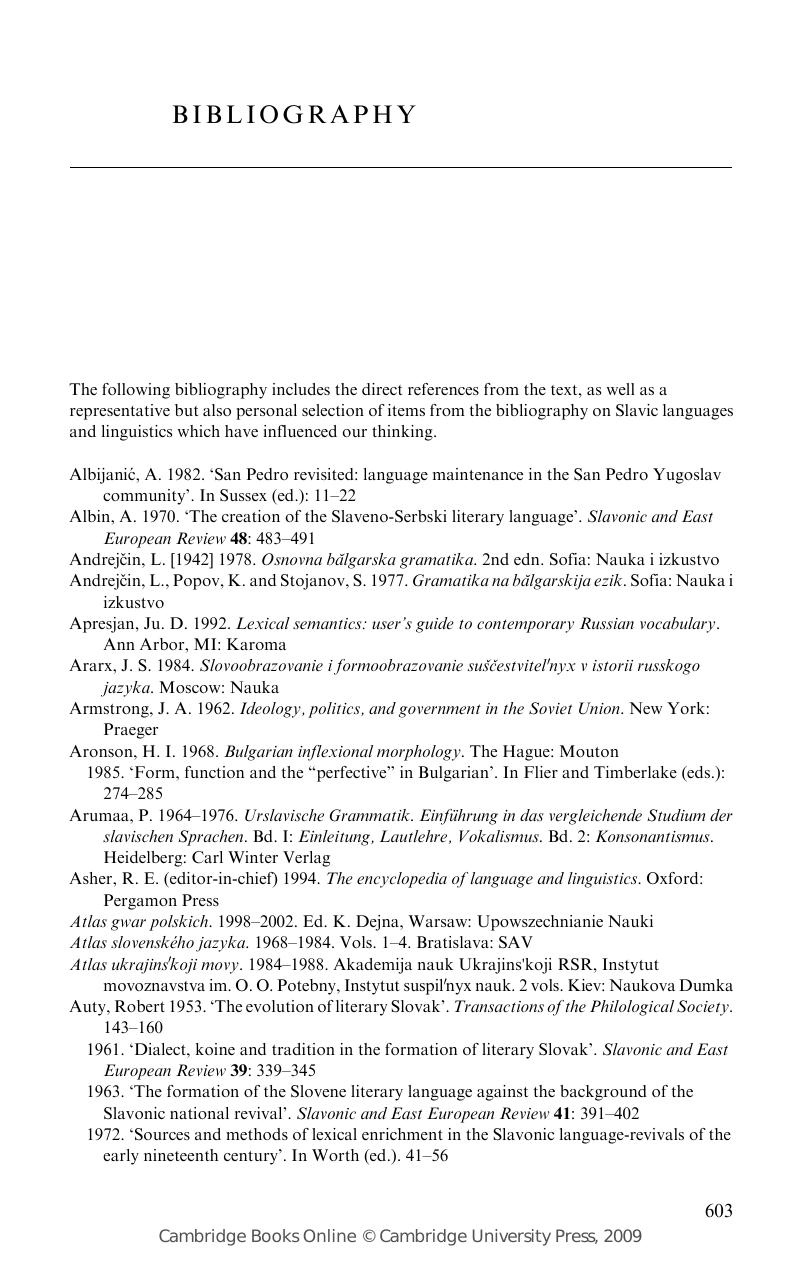Book contents
- Frontmatter
- Contents
- Preface
- Acknowledgments
- map
- 0 Introduction
- 1 Linguistic evolution, genetic affiliation and classification
- 2 Socio-historical evolution
- 3 Phonology
- 4 Morphophonology
- 5 Morphology: inflexion
- 6 Syntactic categories and morphosyntax
- 7 Sentence structure
- 8 Word formation
- 9 Lexis
- 10 Dialects
- 11 Sociolinguistic issues
- Appendix A: Abbreviations
- Appendix B: Orthography and transliteration
- Appendix C: Slavic linguistics: resources
- Bibliography
- Index
- References
Bibliography
Published online by Cambridge University Press: 22 September 2009
- Frontmatter
- Contents
- Preface
- Acknowledgments
- map
- 0 Introduction
- 1 Linguistic evolution, genetic affiliation and classification
- 2 Socio-historical evolution
- 3 Phonology
- 4 Morphophonology
- 5 Morphology: inflexion
- 6 Syntactic categories and morphosyntax
- 7 Sentence structure
- 8 Word formation
- 9 Lexis
- 10 Dialects
- 11 Sociolinguistic issues
- Appendix A: Abbreviations
- Appendix B: Orthography and transliteration
- Appendix C: Slavic linguistics: resources
- Bibliography
- Index
- References
Summary

- Type
- Chapter
- Information
- The Slavic Languages , pp. 603 - 620Publisher: Cambridge University PressPrint publication year: 2006



